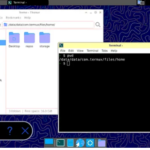Hyper-Velocity-Impacts (HVI) are a common problem in the space environment. They especially concern space missions, in terms of:
• Potential damage to spacecrafts and satellites
• Collisional evolution of small and large bodies of the Solar System
This thesis focuses on the effect of such impacts, through the analysis of the vibration field generated by HVI on both of the aforementioned cases. Referring to the first point, i.e. the HVI-induced disturbances on spacecraft internal components, a wide experimental campaign has been performed on targets representative of S/C structures, making it possible to measuring and reproducing the HVI-induced vibration field on the selected targets. The aim of this activity was to acquire data on transient waves generated after an HVI and propagating from the impact point. Such disturbances have been evaluated in from of acceleration signals. The invaluable information achievable from such an activity is related to the HVI ability of loading structures up to frequencies that are normally not explored in the standard practice for mechanical dynamic testing. These loads can damage electronic components and sensors mounted on S/C. An experimental campaign on structural components represents a unique mean of collecting data about the transient behaviour of spacecraft components subjected to HVI threat. The Study is relevant to both “simplified” (i.e. simple plates and sandwich panels made by Aluminium alloy and composite materials) and “complex” (i.e. structural assemblies including joints) targets, hit by projectiles in the range 0.6 – 2.3 mm at velocity from 2 to 5 km/s. The test-case selected for the experimental activity is the GOCE satellite, whose mission main objective is to measure the Earth’s gravity field modelling the geoid with extremely high accuracy and spatial resolution. To do this, it will carry a gradiometer that is sensitive to disturbances, like the one generated by HVI. For this reason, the assessment of the vibration field that propagates after an HVI is fundamental. As a conclusion, the activity on spacecraft structures resulted in the creation of an extensive database of the disturbance field generated and propagated by HVI on simple and complex assemblies, even highlighting the dependence of the structural response from the mass and velocity of the impacting debris. The disturbance was quantified computing SRS spectra of the measured acceleration signals. This activity made also possible to evaluate the momentum transferred by the projectiles to the impacted targets. This measurement was necessary to validate the numerical technique used to extrapolate the experimental results to structures and impact conditions different from those achievable at laboratory scale with the existing hypervelocity facilities [28]. Moreover, to investigate in detail the typical features of transient disturbances, a dedicated study was implemented on the application of Wavelet Transform (WT) to the sampled acceleration signal on aluminium simple plates and honeycomb sandwich panels. WT was used to explore the complex wave generation and propagation behaviour inside these targets, thanks to its ability of identifying the following wave features: speed of propagation, type, dispersion properties and frequency content. This work led to a better understanding of the origin of disturbance field due to HVI, demonstrating that WT technique may be used to analyse the elementary constituents of transitory signals. V Referring to the second point, i.e. the study of the collisional evolution of minor bodies of the Solar System, several numerical simulations were carried out to study the wave propagation on planetary-like objects. HVI characterize the evolutional story of all the small and large bodies of the Solar System. For this reason, the goal of simulations on porous materials (concrete was used as test-case in this thesis) was to obtain a better comprehension of the impact processes and to provide a tool to validate the results of numerical models, through the analysis of wave generation and propagation on different materials. The results of this activity aimed also to contribute to the data interpretation of the ground and space based observations, in particular in view of space missions such as Smart1, MarsExpress, VenusExpress, BepiColombo, Cassini-Huygens, Rosetta, Dawn. Impact experiments to investigate craterization and catastrophic disruption on planetary objects are limited due to scale effect (i.e. size of the targets, Earth gravity environment, actual performance of the modern hypervelocity facilities). Therefore, a possible method used to study the impact processes is to perform numerical simulations with hydrocodes. The main issue with these tools is the unknown response of materials to high velocity impacts, pressures of several MPa and shock wave propagation. The validation of such models implies to test with the available impact facilities small-scale targets representative of real asteroids and to match experiments and numerical simulations. Waves propagating within the impacted target can be used in the assessment of such numerical models, through the comparison of waves features like: speed, frequency and reflections. In this thesis the possibility to use an accelerometer to measure waves propagation in concrete spheres (representative of porous targets) and to identify wave features with WT is explored. For this reason, SPH (smooth particles hydrocode) simulations have been carried out on a small-scale concrete sphere to better understand the propagation of shock waves and to evaluate the load effects due to the accelerometer mass. Results show that this measurement is possible, even if it is necessary to perform it with a highly sensitive measurement chain.





